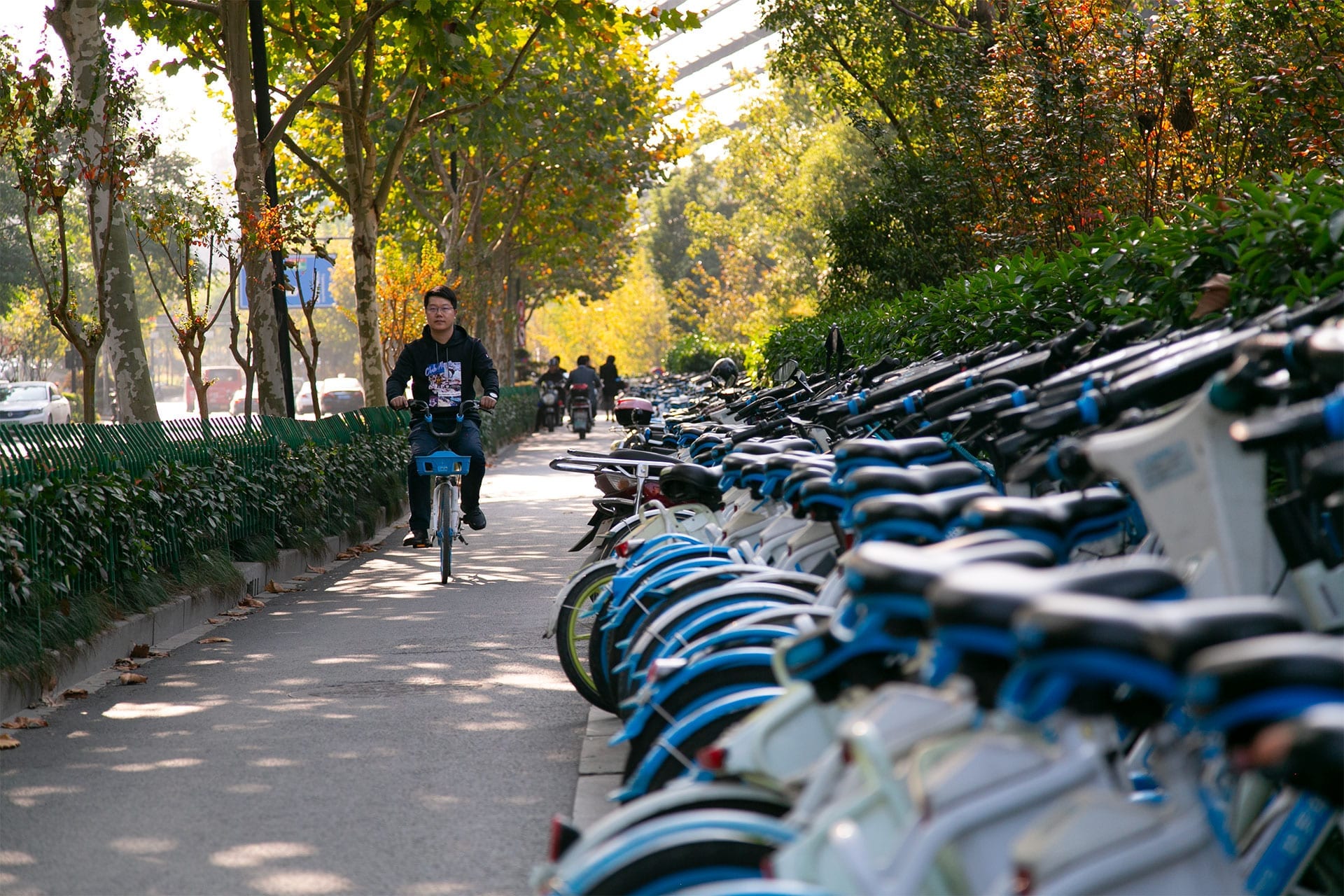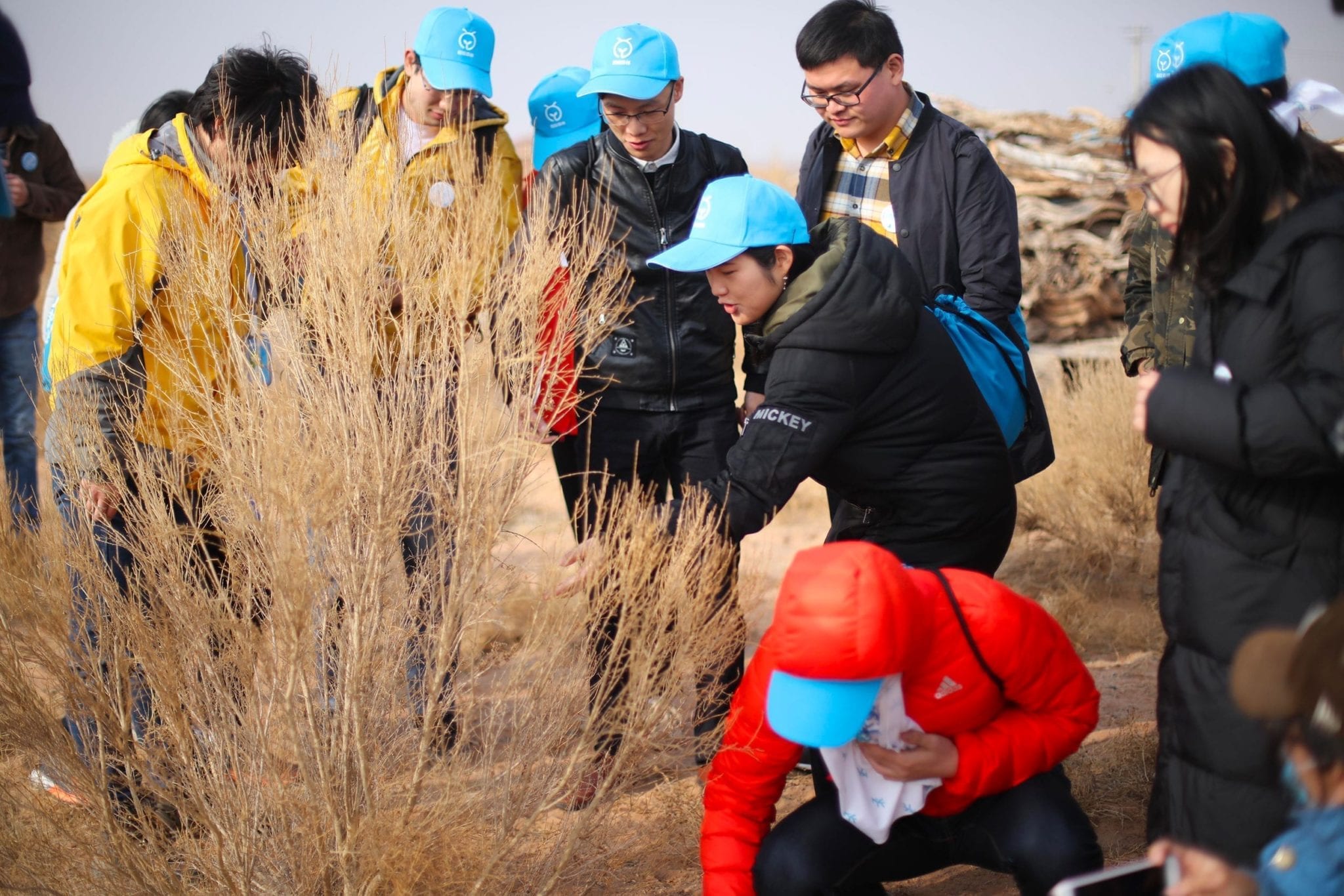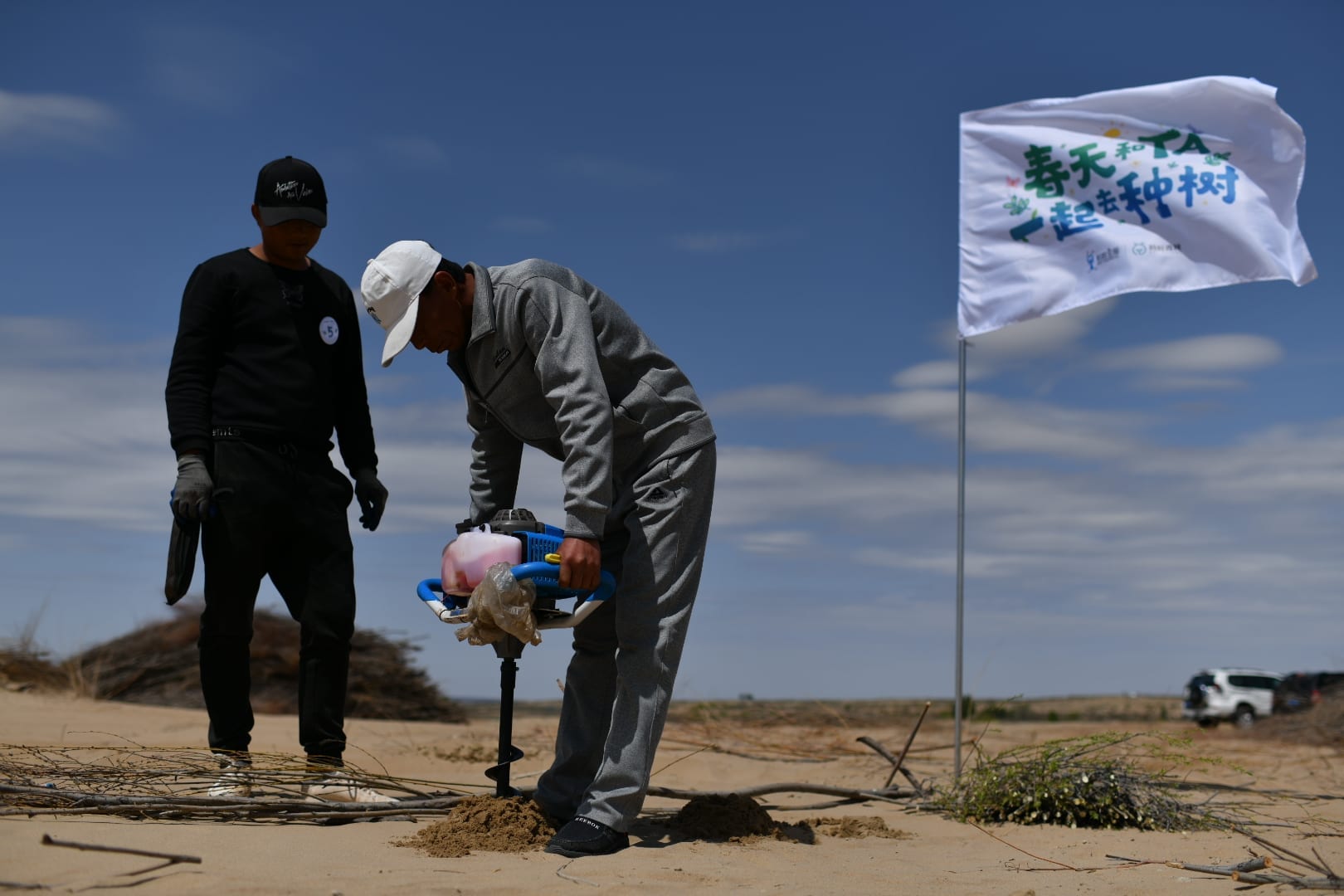Ant Forest Plants Trees for Sustainable Behavior
Alipay is the world’s largest digital platform for gathering data on people’s efforts to reduce their carbon footprints: Through its Ant Forest add-in, users are rewarded ‘green energy’ points for sustainable behaviors such as making online purchases, taking public transport, and bike-sharing through Alipay. Over 500 million users are active on Ant Forest and over 100 million trees have already been planted, reducing carbon emissions by nearly 8 million tons. This is the story of Ving – a resident in Hangzhou, China – an Ant Forest user.
With the Ant Forest add-in available through the Alipay app, users can grow a virtual tree by collecting energy points. The energy earned shows upas a balloon next to the virtual tree on your profile, which appears 24 hours after you’ve completed a sustainable behavior. You have to manually ‘harvest’ or transfer these points, or they will fade away after 72 hours without collection. On the platform, you can also visit your friends’ virtual trees and claim part of the energy they have not collected on time. Once a certain amount of total energy had been reached, you can exchange that energy to plant a real tree in China – choosing not only the type of the tree, but where to plant it based on the menu and your energy capability. After you “plant” a new tree, it will take a while until a foundation “adopts” your tree into their project and plants a real tree with a unique code.
I obtained my first tree on the Ant Forest add-in on 18 December 2016. I still remember how happy I was after getting up early, walking a long distance and using Alipay to purchase my train tickets, cinema tickets, and eventually earned my very first 1,7900 grams of energy to plant a tree in the Alxa Desert – located in the western part of the Inner Mongolia Autonomous Region of China. It took me roughly one month.
Since then, Ant Forest has been part of my life. I started to get up every day at 7:24 AM because that was the time I had to collect the daily energy I had created the previous day, and also the time I could steal some energy from others who were behind with their energy collections. I built a habit of paying with the Alipay app. I started to use public transportation: bus, subway, and shared bikes – each action I take that contributes to saving energy gives me 52 grams of green credits. If I recycle my electric devices and home appliances through Alipay, I can get up to 1.1 kg of credits at once. I have never used this function, but I am very jealous of those who get that much energy!
I started to use public transportation: bus, subway, and shared bikes – each action I take that contributes to saving energy gives me 52 grams of green credits.
After a while, more desert and protected lands were identified for energy donation and, of course, every time I participate in planting trees I try to collect each type of tree available on the list. Not only that, I also try hard to stay on top of the total energy ranking list and be the best amongst my friends who are also participating in this massive sustainability game, because it is free and a very big project that is just too easy to be part of. I had to delete one of my friend’s contact because her record was just way too high to catch up to, and not only that, she used to steal my energy right before I could collect them. I also deleted a few others that did the same thing with me after calculating the gain and loss (if I can steal more than they steal from me). Because the quantity of grams you can steal from a friend is random, I would get super happy if I could steal 50 grams out of someone’s 250-gram balloon but would become sad if it was just 1 gram instead.

Power in numbers
One day, I went into the Ant Forest page and I saw a little banner beneath my tree: “Come check the tree you planted.” Out of curiosity, and boredom, I clicked the link. I saw a video with thousands of very little trees planted in the desert. At that moment, I felt somewhere in my heart little fireworks going off. I certainly wanted to see more updates on what I did, so I followed the public account of Ant Forest and started to get to know the progress of those projects. And I have to say: seeing the result of something I had just did for fun made me so happy.
One online article showed footage from a surveillance camera capturing cheetahs that were curious about the trees and another one showed a cheetah mother with her two baby cheetahs. Other images showed desert animals eating some saplings that we had planted. Then another one told us that farmers in the area were also benefiting from being able to sell sea buckthorn juice with Alibaba, all over China. The Ant Forest Project team set up cameras everywhere to watch and show the status of our forests, to see what has changed over time.

Understanding the meaning of the Ant Forest Project, I got even more into it and I started to promote it with my friends, co-workers, even my parents that barely know how to use a smartphone. I like it so much that what I do has a small contribution to make the desert smaller and bring back biodiversity and environmental benefits for animals (and people).
On 18 November 2018, 12 other friends and I successfully planted a Pinus Sylvestris in the Chifeng Area in north-west China. To plant this tree, we gathered 146,210 grams of energy – enough for me to plant 8 haloxylons – but obviously Pinus Sylvestris is bigger and way cooler. Before we managed to complete this co-planting, my friends and I would wake up very early and try everything we could to get green energy so we could water our joint virtual tree 500 grams per day.

Then one day l received a nudge notification saying that I got a reward. I clicked the notification and it said that the Chinese initiative Alipay Ant Forest had won the UN Champions of the Earth Award – and I was a part of it! The notification stated that up until August 2019, half a billion people created 7.92 million tons of carbon emission reductions by planting 122 million real trees – equal to the surface area of one and a half times the size of Singapore! This glory belongs to each and every one of the half-a-billion users.
The UN Champions of the Earth prize is an annual prize awarded to outstanding leaders from government, civil society and the private sector whose actions have had a positive impact on the environment. Since 2005, Champions of the Earth has recognized 88 laureates, ranging from world leaders to technology inventors.

And when I think back, I realized this all started with a game – and if it wasn’t a game, I probably would have never laid an eye on the desert or thought about what I could do to contribute to the environment. Just like anyone, I would think my own individual behavior would be too small of a contribution to make a difference. With the design of the Ant Forest Project, I started to gain knowledge of what our Earth is facing, and what each of my actions means for carbon emissions. And also, I learned that to make Earth a better place, each of one of our small actions counts.